Moderate overlap front: original test
Rating applies to 2001-04 models
Tested vehicle: 2001 Ford Escape XLS 4-door 4wd
The Ford Escape and Mazda Tribute were introduced in the 2001 model year.
| Evaluation criteria | Rating |
|---|---|
| Overall evaluation | |
| Structure and safety cage | |
| Driver injury measures | |
| Head/neck | |
| Chest | |
| Leg/foot, left | |
| Leg/foot, right | |
| Driver restraints and dummy kinematics | |
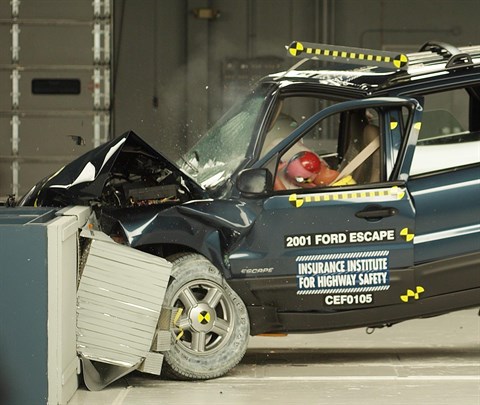
Action shot taken during the frontal offset crash test.
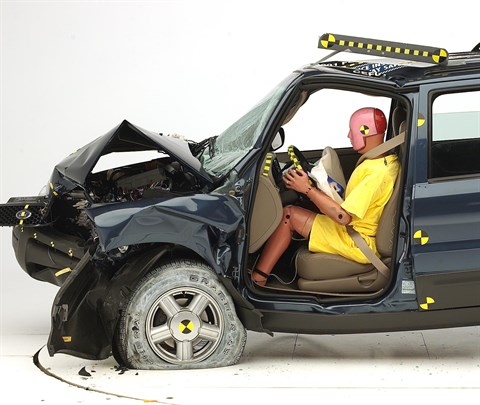
The dummy's position in relation to the steering wheel and instrument panel after the crash test, plus roof rail and door sill buckling, indicate the driver's survival space wasn't maintained well.
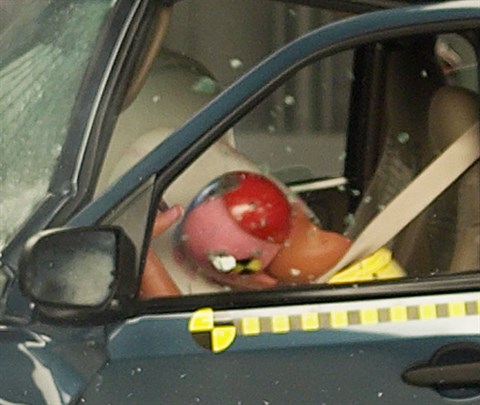
The dummy's head hit the steering wheel through the airbag, producing a high head acceleration.
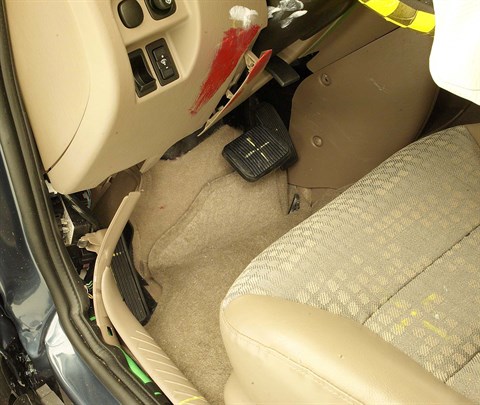
Footwell intrusion contributed to the likelihood of right lower leg injury.
Side: original test
Rating applies to 2001-04 models
Tested vehicle: 2003 Ford Escape XLT 4-door 4wd with optional front seat-mounted combination head and torso airbags
The Ford Escape and Mazda Tribute were introduced in the 2001 model year.
Two tests of a 2003 Escape were conducted, one with an optional side airbag for the driver, and one without. A third test of an Escape, a 2005 model, was conducted because the side airbags were changed beginning with 2005 models to include protection for the rear passenger. These vehicles are rated separately, except that the injury and head protection ratings for the rear passenger are based on both tests of the 2003 models. Structural ratings for the three vehicles are based on all three tests.
| Evaluation criteria | Rating |
|---|---|
| Overall evaluation | |
| Structure and safety cage | |
| Driver injury measures | |
| Head/neck | |
| Torso | |
| Pelvis/leg | |
| Driver head protection | |
| Rear passenger injury measures | |
| Head/neck | |
| Torso | |
| Pelvis/leg | |
| Rear passenger head protection In both tests of the 2003 model, the dummy's head was hit by the pillar behind the rear passenger door. This pillar is required by federal standard to provide some protection for occupants' heads. | |

View of the vehicle and barrier just after the crash test.

View of the vehicle after the crash with doors removed, showing the side airbag and damage to the occupant compartment.
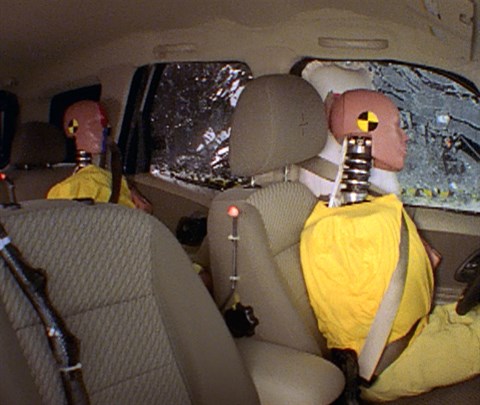
Action shot taken during the side impact crash test showing the driver dummy's head was protected from being hit by hard structures by the side airbag.
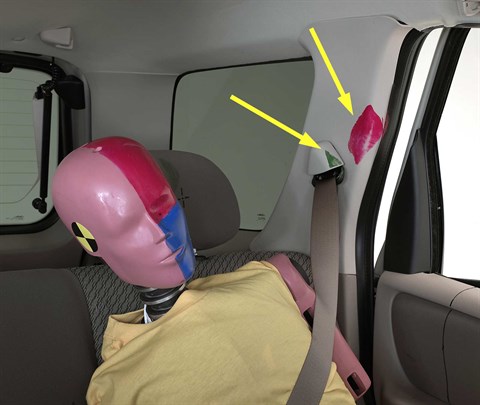
Smeared greasepaint shows where the rear passenger dummy's head was hit by the pillar behind the rear passenger door and the shoulder belt anchorage cover.
Rating applies to 2001-07 models
Tested vehicle: 2003 Ford Escape XLT 4-door 4wd without optional side airbags
The Ford Escape and Mazda Tribute were introduced in the 2001 model year, and the Mercury Mariner was introduced in 2005. The Mazda Tribute skipped the 2007 model year but reappeared the following year.
Two tests of a 2003 Escape were conducted, one with an optional side airbag for the driver, and one without. A third test of an Escape, a 2005 model, was conducted because the side airbags were changed beginning with 2005 models to include protection for the rear passenger. These vehicles are rated separately, except that the injury and head protection ratings for the rear passenger are based on both tests of the 2003 models. Structural ratings for the three vehicles are based on all three tests.
Note: These ratings and specifications do not apply to the hybrid (gas-electric) versions of the Escape and Mariner.
| Evaluation criteria | Rating |
|---|---|
| Overall evaluation | |
| Structure and safety cage | |
| Driver injury measures | |
| Head/neck | |
| Torso | |
| Pelvis/leg | |
| Driver head protection The dummy's head was hit by the intruding barrier, producing moderately high head injury measures. | |
| Rear passenger injury measures | |
| Head/neck | |
| Torso | |
| Pelvis/leg | |
| Rear passenger head protection In both tests of the 2003 model, the dummy's head was hit by the pillar behind the rear passenger door. This pillar is required by federal standard to provide some protection for occupants' heads. | |
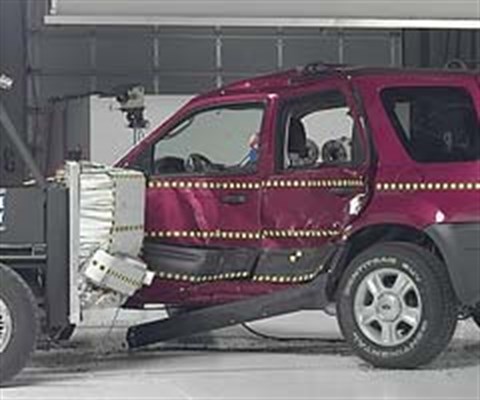
View of the vehicle and barrier just after the crash test.
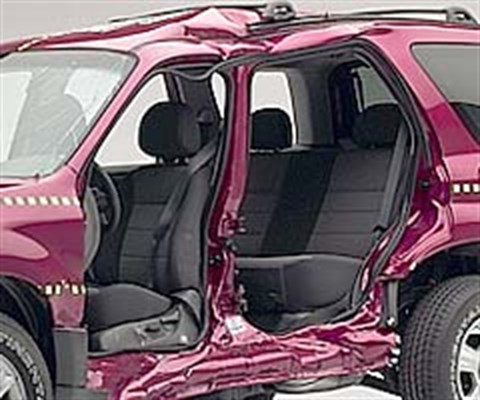
View of the vehicle after the crash with doors removed, showing damage to the occupant compartment.
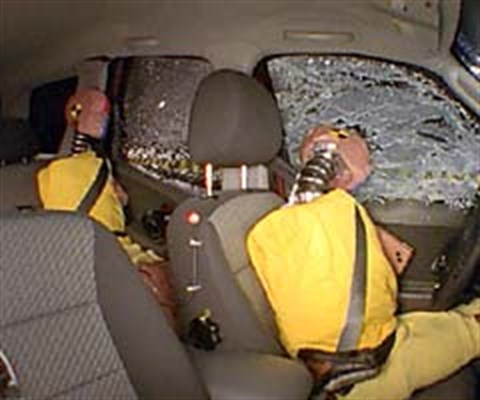
Action shot taken during the side impact crash test showing the driver dummy's head being hit by the intruding barrier.
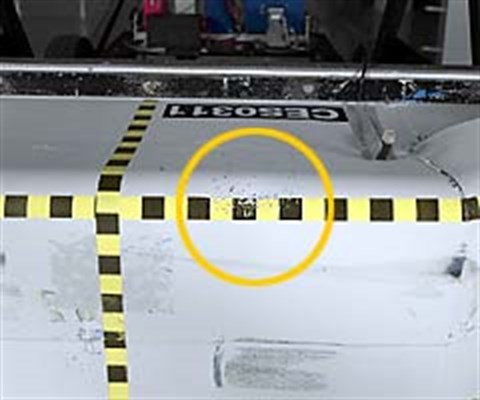
Glass marks on the barrier show where the driver dummy's head hit the barrier.
